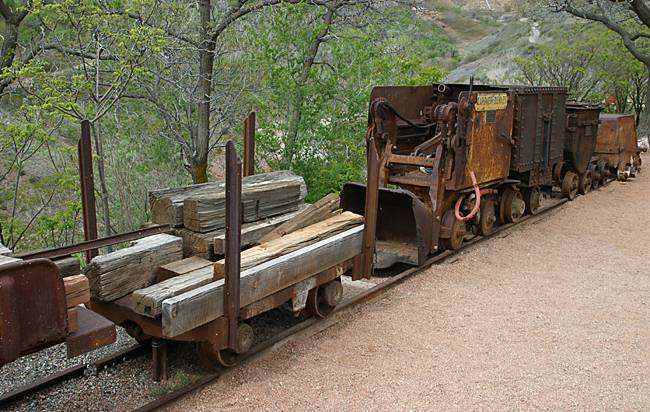| Chapter 1 | Chapter 2 | Chapter 3 | Chapter 4 | Chapter 5 | Chapter 6 | Chapter 7 | Chapter 8 | Chapter 9 |

After the Treaty of Guadalupe Hidalgo and the Gadsden Purchase, Arizona became a part of the United States. But Arizona was still not a State, it was part of the New Mexico Territory. Soon more people began to move here. Some came for adventure, and some came to mine gold, silver and copper.
The Tubac Silver Boom
When the first Spanish explorers came to the Southwest they came searching for cities of Gold, but what they didn't know was that their was plenty of shiny silver, gold and copper hidden below the ground.
In later years, a large mining boom started when silver was found near Tubac. The mines were owned by men from the East, but they hired hundreds of eager Mexican workers. Some of the silver was taken to Mexico where it was put on boats and shipped to San Francisco.
Silver was worth a lot of money. It was used to make coins, jewelry, forks, knives, spoons and many other things. Many people moved to Tubac in hopes of getting rich. People quickly built small cabins or set up tents so they could spend their time looking for silver. Most of the people did not stay long. When the silver ran out, most people left.
Gold Rush Towns
Gila City was one of Arizona's first gold rush towns. Gold was discovered on the Gila River near what is now Yuma. Within a year, about 1,000 people rushed in to find gold. Tents and brush huts were built because no one wanted to spend their time building houses.
Pauline Weaver a famous mountain man, found gold along the Colorado River near Yuma. People flocked to the area and the new town of La Paz was born and quickly became the largest city in Arizona.
Gold was also found near present-day Prescott, on Rich Hill. The gold here was not deep in the ground and could be found by scraping the ground. Using a small knife some men found gold worth thousands of dollars.
Learn more about Weaver, Arizona
Life of a Miner
Life as a miner was harsh. Mining was dirty work and miners worked long hours in the cold and rain. Sometimes they went for many days without finding any gold. Miners had few possessions. Many carried everything they needed with them as they went from place to place. They owned only a few shirts and pants, strong boots and a hat. They carried their own cooking utensils like a frying pan, a pot, tin cups and plates, and a fork, knife and spoon.
Mining Tools
A miner's simplest tool was a pan or washbowl. A miner would go to a river or stream and put mud in his pan. Then he would swish water around. Since gold is heavier than mud, the gold would sink to the bottom of the pan.
Digging for Gold
Sometimes miners had to dig underground to find gold. They would dig a large hole with picks and shovels. In later years, mining companies came in and used water hoses to wash down the mountain side and break down the dirt. This was called hydraulic mining. Then they would put the dirt in a trough that separated the gold from the mud. This type of mining cost a lot of money, but produced the most gold.
Wickenburg's Vulture Mine
"Gold!" shouted a lonely prospector to a vulture hovering over his head. Henry Wickenburg looked carefully at the metal shining and glittering in the sun. He was standing on a gold mine that turned out to be the largest gold deposits in the region.
The town of Wickenburg sprang to life. The J. Goldwater and other stores moved in and sold expensive supplies and food that had to be freighted in by wagon. Noisy saloons stayed open all night. Soon Wickenburg became one of the larges towns in the territory.
Copper Mines
Copper soon became an important mineral in Arizona. The electric motor, telephone, and light bulb had been invented. They all used copper wire. Electricity flowed easily through copper wire.
Copper was first mined in Arizona near present-day Ajo. Hundreds of towns sprang up because of the copper boon. Jerome, Bisbee, Clifton, Morenci, and Ajo all grew quickly. Many of the silver and gold boom towns soon disappeared as miners left in search of copper.
Return to Chapter 6 Outline Return to Top